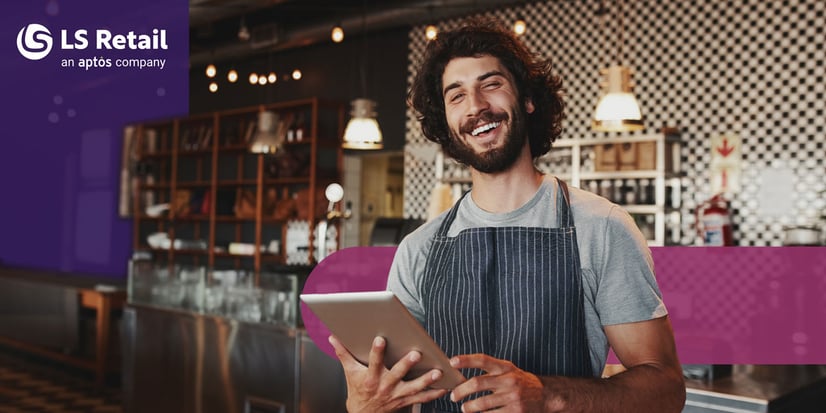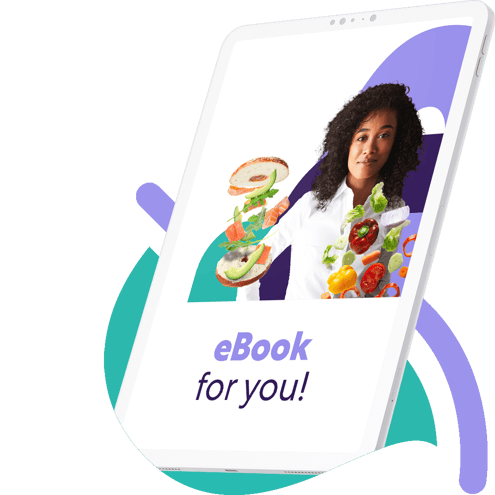Six tips to building a successful omni-channel restaurant business

Is your restaurant keeping up with today’s connected consumers? It wasn’t long ago that you were simply expected to cook up great food, offer a welcoming dine-in experience and potentially the option for customers to call up and collect a takeaway order. Now, that’s no longer enough.
For restaurants, offering omni-channel options means giving guests the choice to dine in or take out, order online or on mobile, be present on popular delivery service apps, and, critically, ensuring a consistent and completely connected experience across all of these different channels. The majority of your customers expect it – 90% of guests said it has become critical to have omni-channel experiences, PYMNTS reports – and they’re willing to spend more money with those doing it best.
The global food delivery market alone is now worth more than US$150 billion, having tripled in size since 2017, according to McKinsey data. It presents a huge opportunity for restaurants: those that make the transition from on-premises to off-premises dining as seamless as possible can interact with consumers in entirely new ways, build affinity with their customer base and, ultimately, distinguish their brand from the competition.
Here are six practical tips on how to make omni-channel work for your food and beverage business and give your guests more options, letting them order through their favorite channels:
Tip #1: Cover key ordering channels
Your customers want to be able to order via the channel of their choosing, and this may change depending on when they order. On a Saturday night they may be more inclined to book a table in your restaurant; mid-week they may prefer to order on your app and have a meal delivered. Today’s channels include, but are by no means limited to, website, mobile app, social accounts, third-party delivery apps, self-serve kiosks, QR codes and in person. It can seem overwhelming, but with the right restaurant management platform, offering new channels shouldn’t mean more work for you.
You need a platform that supports you to serve your customers through all manner of channels, and which ensures that all orders flow seamlessly into your kitchen with all the information your staff need to deliver the best possible dining experience.
It’s worth the investment. According to data from a PYMNTS study on restaurant guests, more than a third of consumers say that tangible improvements to the way they pick up and order food will have the greatest impact on their loyalty.
Tip #2: Track the full order lifecycle
With orders coming in through multiple channels, you need the ability to track exactly where each order comes from and know how it is being fulfilled.
If a customer has placed an order through a QR code and is dining in, you won’t need to package everything up in the same way as if it’s being loaded on a bicycle and delivered across town. Your staff need insights about how to prepare and package each order and when it’s supposed to be ready. The last thing you need is your lobby filling up with delivery drivers, or have customers calling to tell you their meal is cold as it hasn’t been packaged correctly.
Tip #3: Give your customers options
In the restaurant, your customers are used to saying exactly how they would like their order. If they want extra cheese and no mayo on their burger, they can tell a member of staff. Well, they need and expect those same customization options when ordering online or via an app.
Regardless of channel, your customers should still be able to make add-ons and changes – removing a dressing, choosing a different side, or flagging themselves as being allergic to certain ingredients. Your menus should be consistent and transparent, and critically, all that ordering information should transfer seamlessly to the kitchen.
It’s in your interest to get each order right. In the restaurant, a mistake can be fairly quickly rectified. But if that error is only discovered once an order is opened up in your customer’s home, it is much harder to correct, and it could end up costing you repeat business.
Tip #4: Provide reliable status updates
Just as your staff need reliable and timely information in the kitchen to ensure each order is delivered to your customers’ exact requirements, on time, so too do your customers value accurate preparation and delivery status updates.
If your restaurant is at full capacity on a Friday evening and your kitchen staff need more time to accommodate online orders, ensure that information is shared across all appropriate channels. It’s not worth the risk of being inundated, or of disappointing customers with late deliveries. This is particularly crucial when working with third-party delivery service providers.
Tip #5: Support multiple delivery/collection options
Today, your customers want to be able not just to order, but also receive their food in their preferred way, whether that’s dining in, taking out, picking up curbside or having the meal delivered.
The rise of delivery services continues to reshape the industry. In the past, restaurants typically handled food delivery themselves, if at all. Now, an entire ecosystem of players is involved, and it requires restaurants to consider which services they want to offer and which platforms they want to have a presence on.
As McKinsey states in its report ‘Ordering in: the rapid evolution of food delivery’, “Restaurants will likely need to introduce new processes and systems to accommodate high volumes of delivery orders. They will need to adapt their strategies, think carefully about how to partner with delivery platforms, and experiment with new ways of doing business.”
Tip #6: Connect with your customers on a personal level
Customers value connection. In the Deloitte survey ‘The restaurant of the future’, 70% of consumers said they look for apps that deliver personalized offers and convey the sense that a restaurant knows them.
Today, every piece of information you gather about your customers gives you greater visibility of who they are, what they like to order, when and how they like to have their order fulfilled. It allows you to stay top of mind with promotions and updates long after they’ve last bought from you, and helps you to encourage repeat business by rewarding regulars. Perhaps you could entice a regular takeaway customer to visit your restaurant at steak night by sending them a dine-in discount code. Or maybe a customer has ordered from you ten times in a month, and you want to thank them with a special offer on their next order. Your efforts will pay off. Nearly half of restaurant customers engage with a loyalty program in some way, PYMNTS reports. And among customers using loyalty programs, most are willing to spend more at local restaurants to earn customized discounts.
Want to find out how a unified restaurant management platform can kick-start your omni-channel strategy and support you in the years to come? Contact us to learn more about our unified platforms for restaurants LS Central and LS First, or to get a personalized demo.

